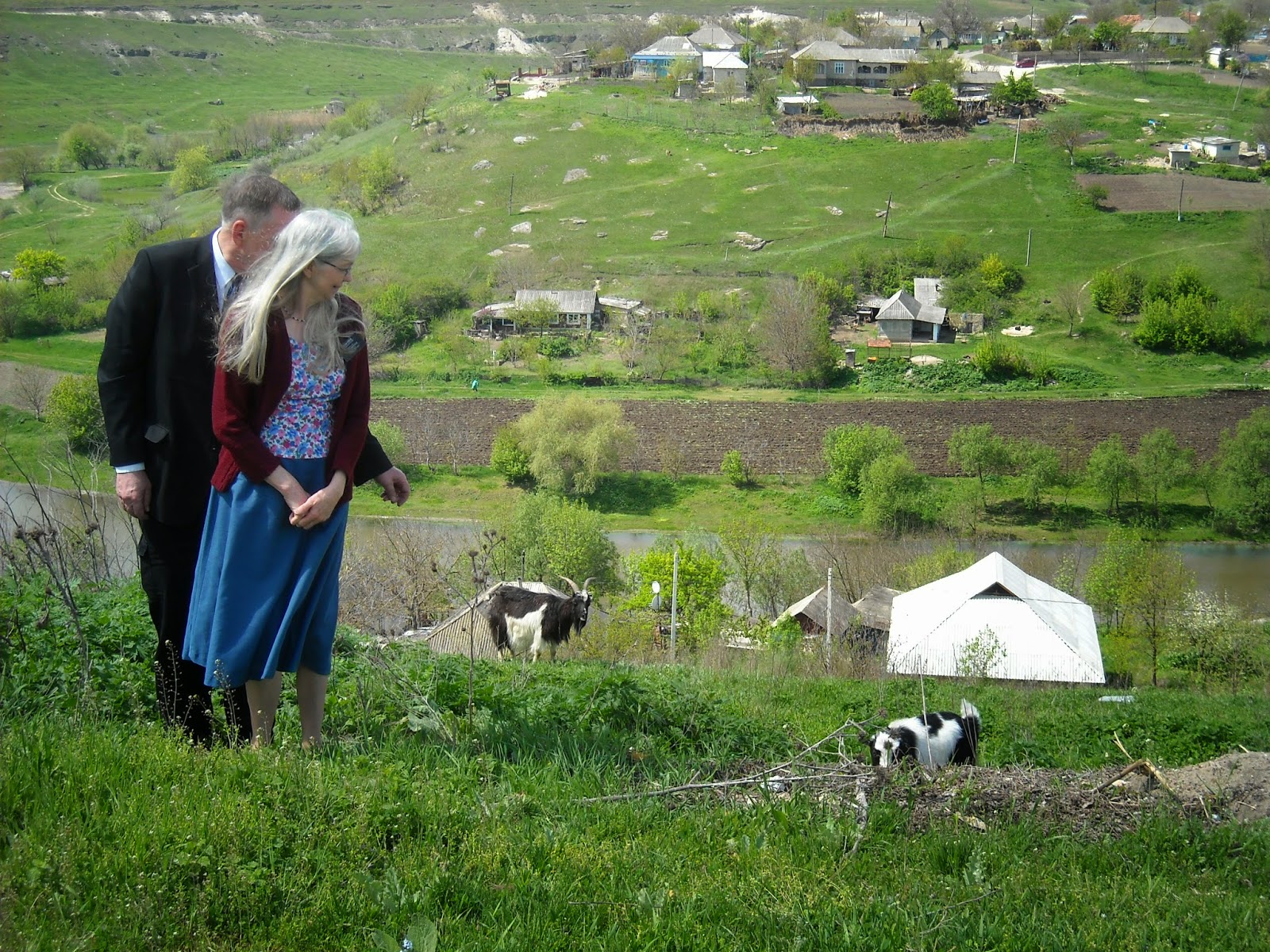On April 16, 2014, Arlana and I drove to the village of Selemet to talk to the mayor and the village contractor who was hired to drill a new deep water well, construct a new water tower, and lay several miles of new water pipe for an area of the village to have indoor running water. Near the mayor's office, we saw this huge nest on top of a power pole with a stork preening itself. A nesting stork is said to be a sign of good luck. The Selemet mayor wants the church to help in financing a clean water project in the village.
Near the Stork's nest was this gaggle of geese.
We came to Selemet a day after a rainfall and everything was wet and muddy. This is the village main street crossing the river bridge and heading to the part of the village that will benefit from the clean water project. There were no side walks nor paved streets.
A side street shows a lady walking past one of 192 shallow dipping water wells that are located thoughout the village.
There were also a lot o chickens in the village.
A closeup view of the shallow water well.
A common practice was to harvest the corn stalks in the autumn and bring them to the village and stack them around the houses as wind breaks and to burn as fuel.
Also in the village were turkeys....
and ducks.....
and sheep.....
and cows.
This is a picture of and old but useable tracked tractor with a cultivator.
Also in the village were goats....
and horses. Horses are very popular to take people and carts around the village instead of cars or trucks.
Notice the cart's suspension!
This is a typical scene where there is no indoor plumbing.
Arlana is visiting with the Selemet mayor who was touring us around her village. We were at the end of the road and we had to turn around. The mayor was afraid that we would get stuck. Luckily, we had 4-wheel drive and had no problem returning to the main street.


























